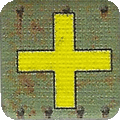boersma8 (Aug 17, 2011)Played this scenario with a friend today and below are our findings.
The bad news is that in our view it is yet another unbalanced scenario. It's virtually impossible to lose for a somewhat skilled player playing the Russians. The good news is that a few very minor changes can fix this. It is just a shame that the designers don't pick up on these things before publishing them. I don't really have a problem with a scenario that you've played for ten times to then find out that one side is slightly favoured over the other, but in the case of too many TOI scenarios it only takes a few ROUNDS of play to see that it's not balanced.
So what makes the scenario unbalanced? Basically three things:
1.) The Russians have way too much time to achive their objective (10 rounds), which gives them more than enough time to pin/disrupt or simply destroy or route the German defenders thereby opening a path along with the sixteen required figures can easily be exited off the map.
2.) Elite formations op card coupled with no restrictions against combined fire. The best the German can do cover wise against an attack of say 3 regular squads combining fire with the lead unit throwing as many as 8 dice and the two other ones 2 each for a grand total of 12 dice against a maximum possible cover of 3 or 4 (woods + medic and woods + officer+ elite respectively). A guaranteed kill. As I said, since there's no time pressure for the Russians they can easily repeat this over several rounds to eliminate all the opposition.
3.) The balkas not slowing down the Russians at all with the offical movement cost of 1 even when crossig them sideways.
So what are the solutions?
1.) Reduce the number of rounds to 6 or 7.
2.) Use the massive confusion op card for the Russians. (negates combined fire). It also seems to fit right in judging by the scenario description.
3.) Use the balka rules described in a related thread. At the very least do something about the way they DO NOT impede movement. We used the houserule that a unit must stop when entering or exiting a balka unless it comes from or moves to an adjacent balka hex. This slows the Russians down at least somewhat.
I have the idea that the rules used for dropping the paratroopers ( the way artillery fire works along with a possible drift) are intended to have a few units land off the board (which would mean that they enter on the round that equals the result of the black die in case of drift). However, this is quite easy to avoid just by NOT setting up the target hexes on the edge of the board. Played the first two rounds solo once and by doing it this way only one landed off board and when playing the entire scenario with my freidn today not a single unit landed off the board. This ensures that ALL Russian units can contribute their firepower and that none need to hurry up to catch up in order tgo possibly make it off the map fulfilling the victory conditions.
I'll play it again someday soon with the massive confusion op card for the Russians and 6 rounds of play. We'll keep on using the balka rules as described above and in a more detailed way in the thread called "Paradrop at Kanev and balkas". This should make for a much closer scenario.
Three more ideas that came up:
1.) Give the Germans the morale deck along with or instead of the ground support deck.
2.) Have both sides bid in how many rounds they expect to be able to fulfil the scenario's victory conditions for the Russians. the player with the lowest bid gets to play the Russians. If he manages to win within the number of rounds mentioned, he wins. Otherwise he doesn't. Obviously if only this change is used any other changes would not necessarily be required.
3.) Add a German engineer squad to each division. They might come in handy building entrenchments to provide some additional cover, which is sorely needed foir the Germans a spointed out above.
Two more final general observations: after about 5 rounds or so the Russian reinforcement deck becomes obsolete. Any units placed would never be able to make it off the map, nor will they be able to put in any significant weight in the battle. Also, it might make for a more closelyt contested initiative if the German command objective were worth 3 points rather than two. In our game the Russians were constantly able to win initiative if they wanted it badly enough since they constantly had one more command point available.
Final conclusion: unbalanced scenario but with potential.
ffg-forum-archive.entropicdreams.com/top...-kanev-short-review/


 Medic
Medic Expert
Expert